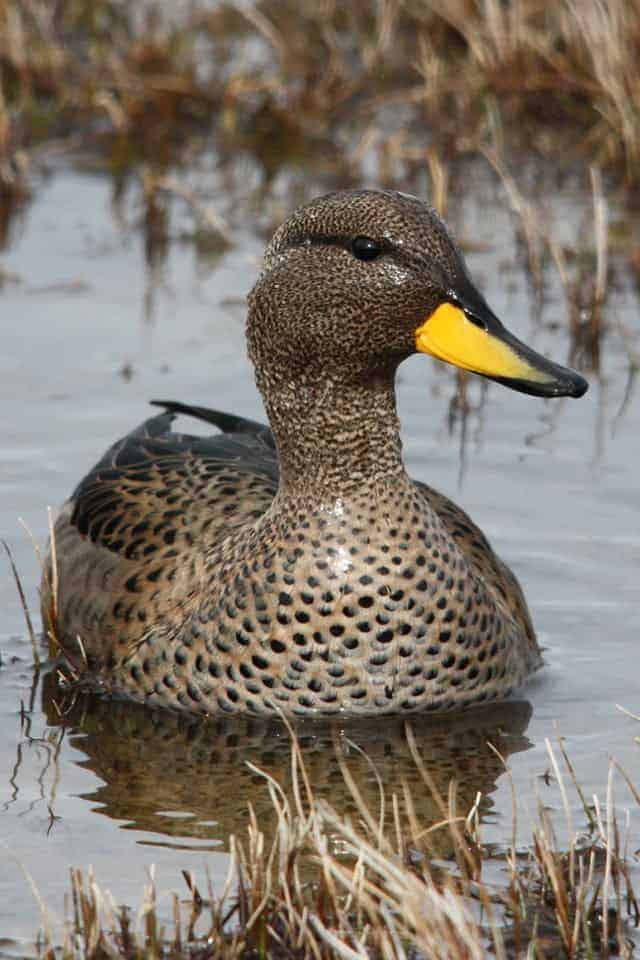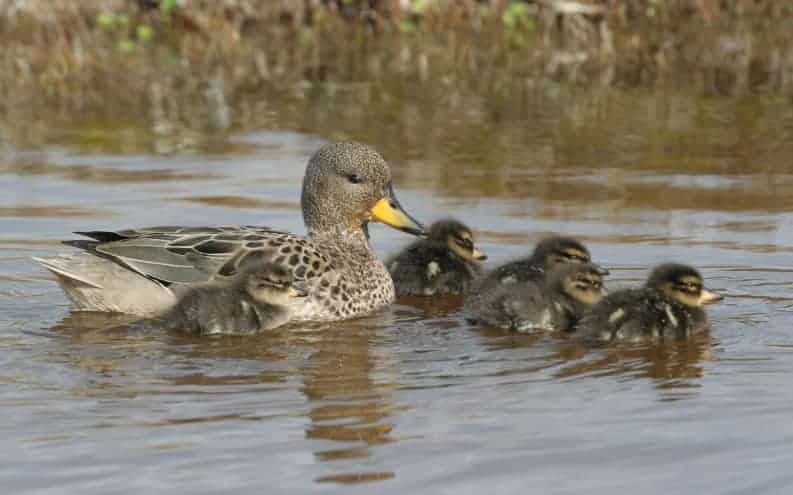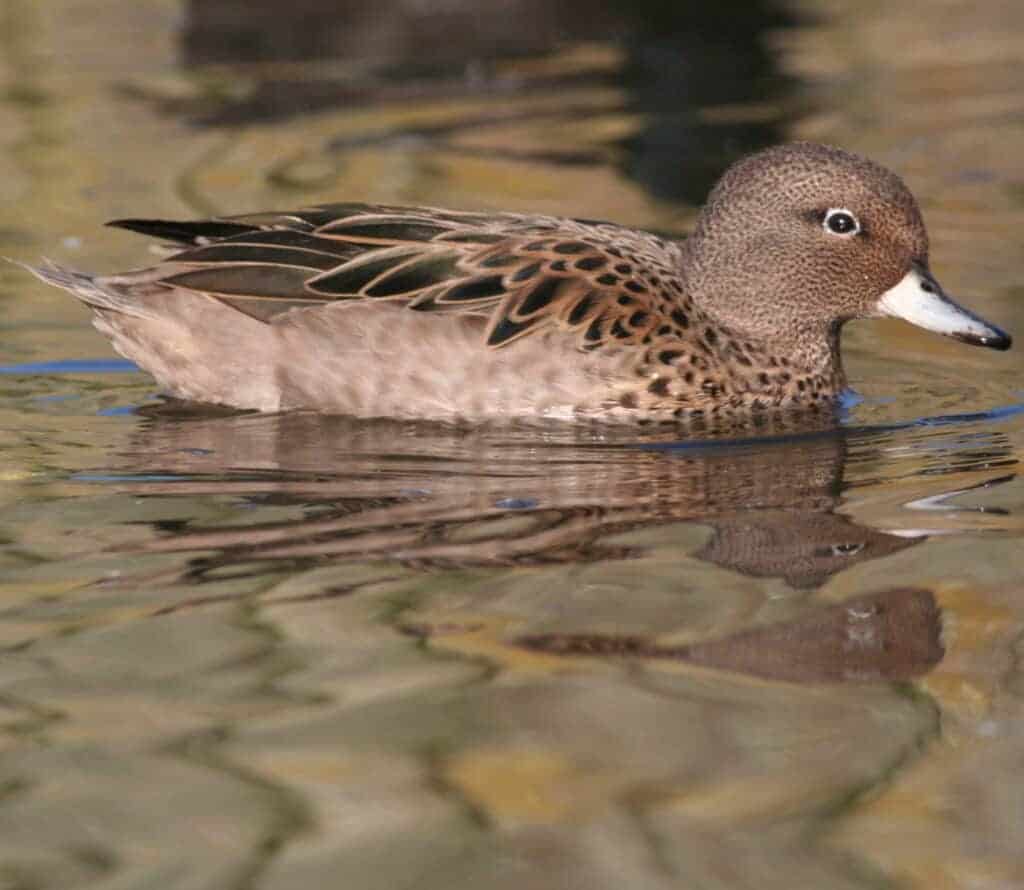Yellow-billed Teal

There are two subspecies of Yellow-billed Teal recognised:
- Sharp-winged Anas flavirostris oxyptera
- Chilean A. f. flavirostris


Anas flavirostris
The dainty Yellow-billed Teal is a widespread and often common bird in South America, occurring in a number of different races. By far the most numerous is the nominate Speckled or Yellow-billed Teal, Anas f. flavirostris, which is readily identified by its small size (it is slightly bigger than a Eurasian Teal) and striking yellow bill. The latter is a feature it shares with the Yellow-billed Pintail, which shares much of the same range, but is considerably larger and longer-necked.
The bright yellow bill is the most conspicuous feature of this aptly named teal: the sexes are similar. It ranges from southern South America to the Falkland Islands and South Georgia, favouring lakes, rivers and marshes.


Birds of the race oxyptera, usually known as the Sharp-winged Teal, occur on high-altitude Andean lakes from Peru to northern Argentina, and are sometimes regarded as a separate species. These ducks are very similar to their lowland cousins but are slightly bigger with strikingly pale, almost silver, underparts. The Andean Teal (A. andium) was formerly thought to be another race of flavirostris but is now given full specific status.

Quiet and friendly birds, Yellow-bills do well in collections, where they breed readily, laying a clutch of five to eight creamy eggs. Incubation (24 days) is by the duck, but unusually for an Anas duck, the drake may assist in rearing the ducklings.
FURTHER READING
Graham, A. M. et al. (2021) Heredity. High-altitude adaptive introgression of beta-globin in two Andean waterfowl.
Share this page